#ammonoids
Explore tagged Tumblr posts
Text

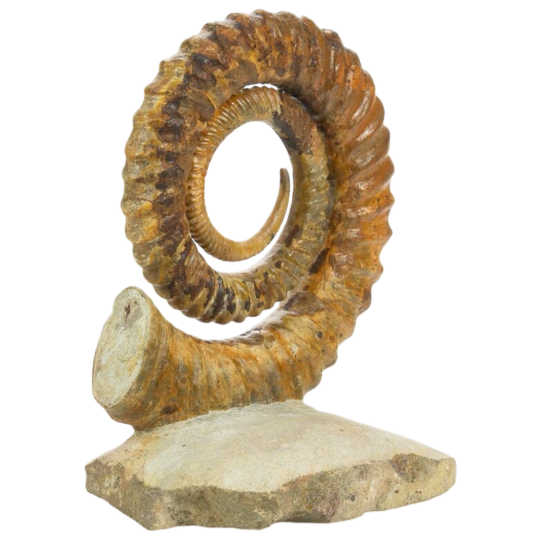
3.5" Early Devonian Ammonoid (Anetoceras) - Tazarine, Morocco
#devonian#anetoceras#ammonoid#ammonite#png#transparent#paleontology#paleo#prehistoric#fossil#fossils#fossil shell
428 notes
·
View notes
Text

Work in progress on a goniatite painting. What other critters should I add?
#geology#geologyjohnson#palaeontology#fossils#fossilfriday#fossil#paleontology#ammonite#ammonoid#Goniatite#cephalopods#cephalopod
190 notes
·
View notes
Text
Straying from the prompt list to finish rigging models from the other project. This flat dude is Artinskia artiensis, an older ammonoid from the Carboniferous to the Permian!
#paleo art#palaeoblr#cephalopod#ammonite#blender3d#animation 3d#hotammoniteaugust#digital art#mesozoic#prehistoric#prehistoric animals#Artinskia#ammonoid
285 notes
·
View notes
Text














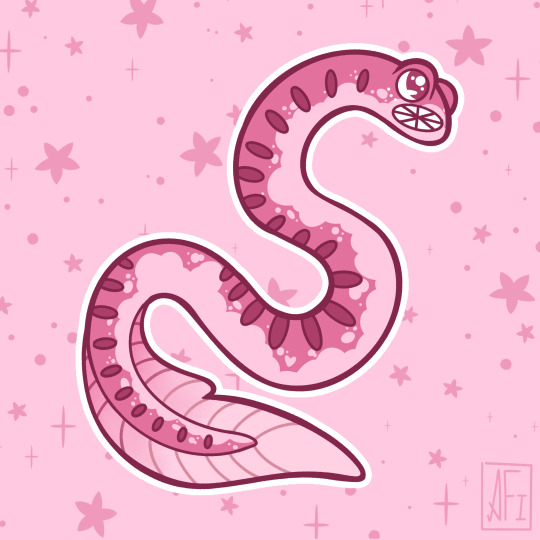



My Carboniferous!
Meganeura - Arthropleura - Tully Monster
Falcatus - Edestus - Acanthodes
Stethacanthus - Squatinactus - Rhizodus
Megarachne - Pederpes - Edaphosaurus
Diplocaulus - Goniatitic Ammonoid (Goniatites) - Conodont
Crinoid - Rugose Coral - Conulariid
Stickers || Phone Wallpapers Masterlist
Planned or in the works: Cyclida, Essexella, Ophiacodon, Allenypterus
#art#my art#paleoart#paleontology#science#illustration#carboniferous#paleozoic#meganeura#arthropleura#bug#insects#tully monster#shark#falcatus#edestus#acanthodes#stethacanthus#squatinactus#rhizodus#megarachne#sea scorpion#pederpes#edaphosaurus#diplocaulus#ammonoid#conodont#crinoid#rugose coral#conulariid
72 notes
·
View notes
Text

Everyone say thank you to the Paleontological Research Institute for making this a thing that exists.
16 notes
·
View notes
Text
SIDELINED SEASHELLS: REAPPRAISAL OF THE MIDDLE TRIASSIC AMMONOIDS OF SAMOBOR AND ŽUMBERAK MTS. (NORTH-WESTERN CROATIA) AND THEIR SYSTEMATICS AND BIOSTRATIGRAPHIC IMPLICATION
Published 7th September 2023
Ammonoid fossils from the Basinal Middle Triassic of the Samobor and Žumberak Mts in north-western Croatia are formally described and identified, revealing an impressive range of diversity within the region.
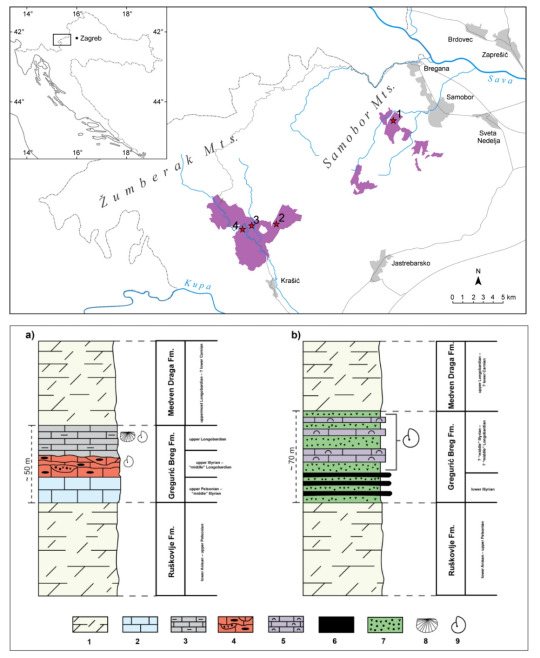
Topographic map of the Samobor and Žumberak Mts. area, The schematic stratigraphic columns of the localities of interest (1-late diagenetic dolostone, 2- shallower-water thick-bedded limestone, 3- thinly bedded, marly limestones, with occasional occurrences of chert and pyroclastic rocks, 4- grey to red nodular silicified limestone with lenses/layers of ammonitic limestone and pyroclastic rocks, 5- bedded hemipelagic limestone with cephalopods and juvenile pelagic bivalves, 6- radiolarian chert, 7- pyroclastic rocks, 8- occurrence of the bivalve Daonella, 9- occurrence of ammonoids)
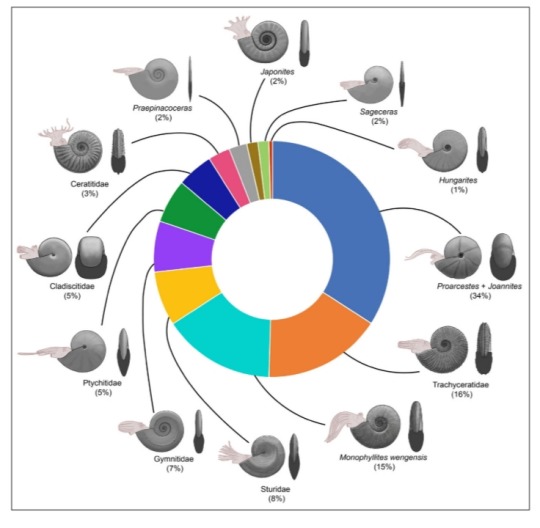
Proportion of the ammonoid taxa from the historic collections of the relevant institutions


A list of examined ammonoid taxa collected from the red nodular limestone facies of the Gregurić Breg locality, A list of known ammonoid taxa collected at multiple neighbouring localities in the Žumberak Mts
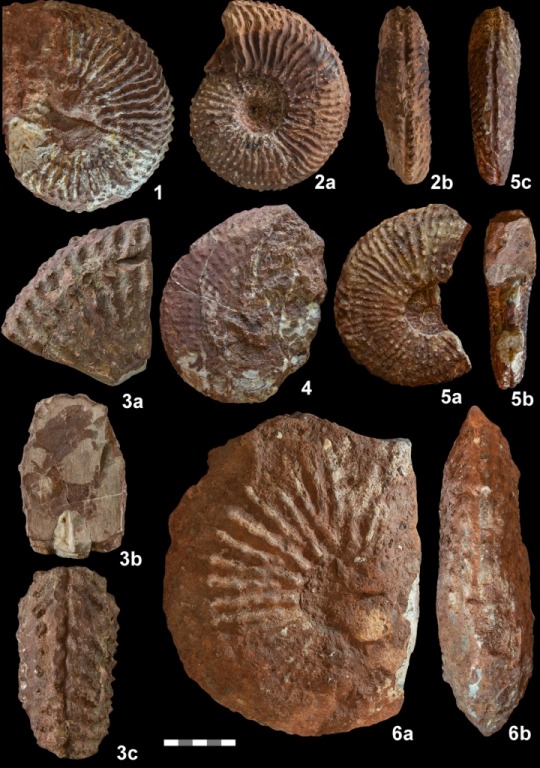
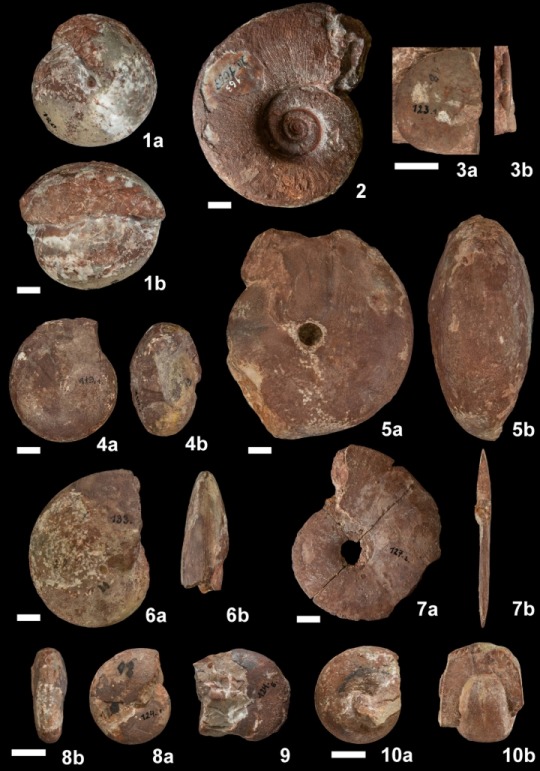

examples of the described ammonoid fossils
source:
9 notes
·
View notes
Text
I WANT ALL THE PALEZOIC PALS FOR MY PLUSH JUNGLE!
can someone tell me whats the difference brown and green trilobites?
If you have ever been tempted by a Paleozoic Pal, like a a stuffed trilobite or a full size eurypterid body pillow, now's the time to buy one, before they and a really lovely little museum are gone for good 😭😭😭
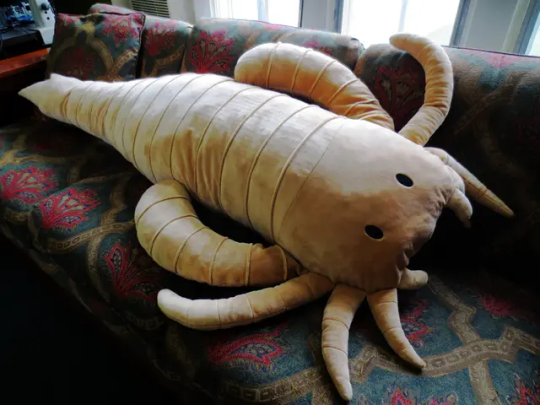
#museum of the earth#paleozoic#i had this museum on to visit list when i go to new york#save the fossils#paleozoic pal#go get it#Paleontological Research Institution#trilobite#eurypterid#ammonoid#paleontology
43K notes
·
View notes
Text
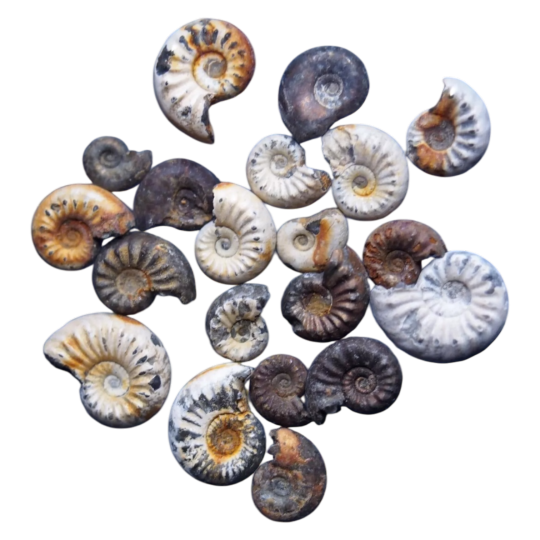
20pcs 5-8mm Pleuroceras AMMONITE Germany Fossil lot
#ammonoid#ammonite#fossil shell#fossil#fossils#multi#Germany#pleuroceras#png#transparent#aes#paleontology#prehistoric#paleoblr
686 notes
·
View notes
Text
Anomalocaris, Marrela, Misc Ammonoid, Hallucigenia, Sidneyia, Opabinia, Ottoia, Halichondrites, Scantacaris, Pikaia, Olenoides(?)
I’ve been thinking about these graphics that depict the cambrian explosion as a LITERAL big bang explosion all day. They’re so fucking funny to me
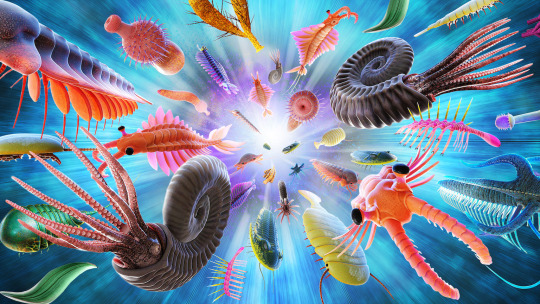
canbedone / Adobe Stock
Literally kaboom
#cephalopods like nautiloids and ammonites didnt exist until the ordovician/sillurian so i didnt really put the effort in to identify its#exact taxa#even then. theres so many ammonoid species that look exactly like that LMFAO
46K notes
·
View notes
Text
if anyone knows of any really good resources on ammonoids (ammonites) please tell me about them thanks
#im making something in minecraft which is museum / aquarium / zoo esque and im debating on how to make a particular section#wondering if I should have a section specifically about ammonoid evolution (set up in a story like sequence) or just split that up into#the various sections I already had in mind which was splitting by time period and general habitat#anyway yeah thats it#text#ammonites
1 note
·
View note
Text

Wood magic wand "CHRONOS' SCEPTER ⏳" Ancient red gum (+10.000 years old), bog-oak (+7.500 years old) with Madagascar Douvilleiceras ammonite (+65milions years old) with aluminium parts by Marco Bianchini
BacchettemagicheMB.etsy.com
#bacchetta#bacchettamagica#bacchettemagiche#magicwand#magicwands#wand#wands#baguettemagique#zauberstab#varitamagica#wicca#wiccan#magic#witch#wizard#witchcraft#magician#cosplay#harrypotter#hogwarts#hogwartslegacy#wizardingworld#ammonite#ammonoid#redgum
1 note
·
View note
Text


My Paleozoic is full of rainbows but these guys in particular got the real deal 🌈🩷
Hallucigenia - Goniatites (Goniatitic Ammonoid)
Stickers || Phone Wallpapers Masterlist
34 notes
·
View notes
Text
Here's some fish and two cephalopods that I dreamt of last night. I was looking at a beautiful large aquarium and saw many pretty scapes and animals! The tank mostly consisted of shallow freshwater fish, but on the very rightmost side of the tank there was a noticeable deepening where "deep sea" creatures lived in darkness, in the same very big tank. I think these I remember best:



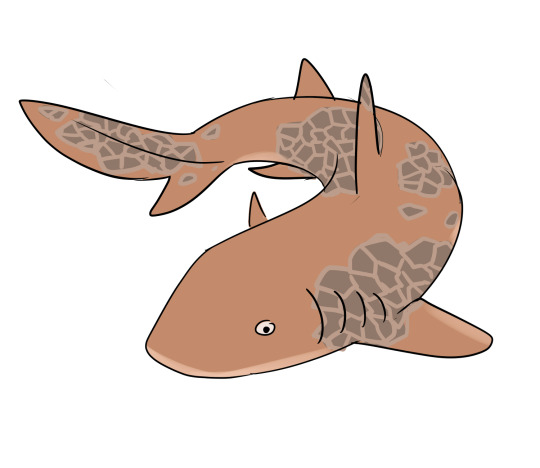
The fish in the first picture were all rather small and freshwater animals, even that funny turtle-wrasse fish, which was only about the size of a fist. The orange fish and the black vertical fish were both schooling fish, the orange fish stuck close to a patch of moss while the black fish were floating in groups of 3. The spotted black fish was territorial and a single one was chasing other fish around. The straight-shelled ammonoid-looking cephalopod and the thorny squid were deep sea animals! Inside the squid's suckers (which it only had a single row of) it had retractable teeth or hooks, kind of like the hooks of a colossal squid! It bore great resemblance to a reef squid. Also a "deep sea" animal, the fish on the right of the squid (I can't even begin to properly call it anything) chased an aquarium scraper on a stick that I was trying to use to clean the big tank and even nearly leapt out of the water in pursuit.
At some point I was also looking at another tank with sharks in it! That's when I saw that coppery shark with rocky patterns on its side. It had a species name, which I read from an information plaque, but sadly I no longer remember.
#it was a lovely dream. now i wish i was looking at fish!#art#my art#dream weirdness#shark#sharks#fish
241 notes
·
View notes
Text
Round 3 - Cephalopoda - Nautilida




(Sources - 1, 2, 3, 4)
Order: Nautilida
Common Name: “nautilus” (pl: “nautiluses” or “nautili”)
Families: 1 - Nautilidae
Anatomy: Smooth external shells with internal chambers, 50-90+ tentacles, toothed radula within parrotlike beak
Diet: crustacean molts, hermit crabs, carrion
Habitat/Range: Indo-Pacific ocean, at depths of several hundred metres
Evolved in: Order Nautilida in the Devonian, Family Nautilidae in the Triassic (230 million years ago)
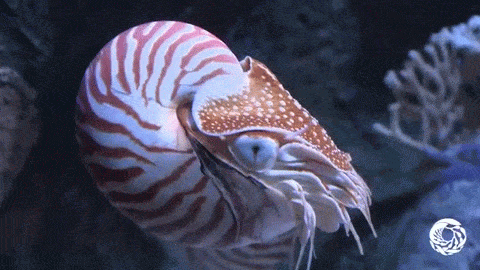
Propaganda under the cut:
During the Middle Devonian, Nautilus species were more diverse, and their shells were more varied than those found in species of living Nautilus, ranging from curved (cyrtoconic), through loosely coiled (gyroconic), to tightly coiled forms, represented by the Rutoceratidae, Tetragonoceratidae, and Centroceratidae. Only a single genus, Cenoceras, with a shell similar to that of the modern nautilus, survived the Triassic extinction, at which time the entire Nautiloidea almost became extinct. They diversified again, but never reached the extent of diversity they had before the Triassic extinction. The nautilids were not as affected by the end Cretaceous mass extinction as the Ammonoids that became entirely extinct, possibly because their larger eggs were better suited to survive the conditions of that environment-changing event.
Nautiluses are the sole living cephalopods to have external shells. They can withdraw completely into their shell and close the opening with a leathery hood formed from two specially folded tentacles.
The nautilus has the extremely rare ability to withstand being brought to the surface from its deep natural habitat without suffering any apparent damage from the experience. Where fish or crustaceans brought up from such depths inevitably arrive dead, a nautilus will be unfazed despite the pressure change of as much as 80 standard atmospheres (1,200 psi).
Nautiluses have a seemingly simple brain, lacking the large complex brains of octopus, cuttlefish and squid, and had long been assumed to lack intelligence. But recent experiments have shown not only memory, but a changing response to the same event over time.
In a study in 2008, a group of Chambered Nautiluses (Nautilus pompilius) were given food as a bright blue light flashed until they began to associate the light with food, extending their tentacles every time the blue light was flashed. The blue light was again flashed without the food 3 minutes, 30 minutes, 1 hour, 6 hours, 12 hours, and 24 hours later. The nautiluses continued to respond excitedly to the blue light for up to 30 minutes after the experiment. An hour later they showed no reaction to the blue light. However, between 6 and 12 hours after the training, they again responded to the blue light, but more tentatively. The researchers concluded that nautiluses had memory capabilities similar to the "short-term" and "long-term memories" of the more advanced cephalopods, despite having different brain structures.
Female nautiluses spawn once per year and regenerate their gonads, making nautiluses the only cephalopods to be able to breed more than once in their lifetime.
Nautiluses may live for more than 20 years, which is exceptionally lengthy for a cephalopod, many of whom live less than 3 even in captivity and under ideal living conditions. However, nautiluses typically do not reach sexual maturity until they are about 15 years old, limiting their reproductive lifespan to often less than five years.
The osmeña pearl is not actually a pearl, but a jewellery product derived from the iridescent inner layer of the nautilus shell. Nautilus shells are also sold whole, carved as souvenirs, or historically used to make items such as lamps and cups. However, these are not simply shells that wash ashore; the animals are killed for the shell. The low fecundity, late maturity, long gestation period, and long life-span of nautiluses make them vulnerable to overexploitation, and high demand for their ornamental shells is causing population declines. In 2016 all species in the family Nautilidae were added to CITES Appendix II, regulating international trade, though in some places they can still openly be found for sale in tourist areas. The best way to combat nautilus population decline is to stop the demand for these shells.
#animal polls#I’m not gonna lie I have 1.5 nautilus shells in my house 😓#bought them when I was young and before nautiluses were protected#I know better now of course but they’re just… here… on my shelf of skulls and stuff#If you want one I suggest looking in antique and thrift shops so you’re not directly funding nautilus poaching!#don’t buy them from shell shops and other tourist attractions#or Etsy#Round 3#Cephalopoda#Nautilida
121 notes
·
View notes

